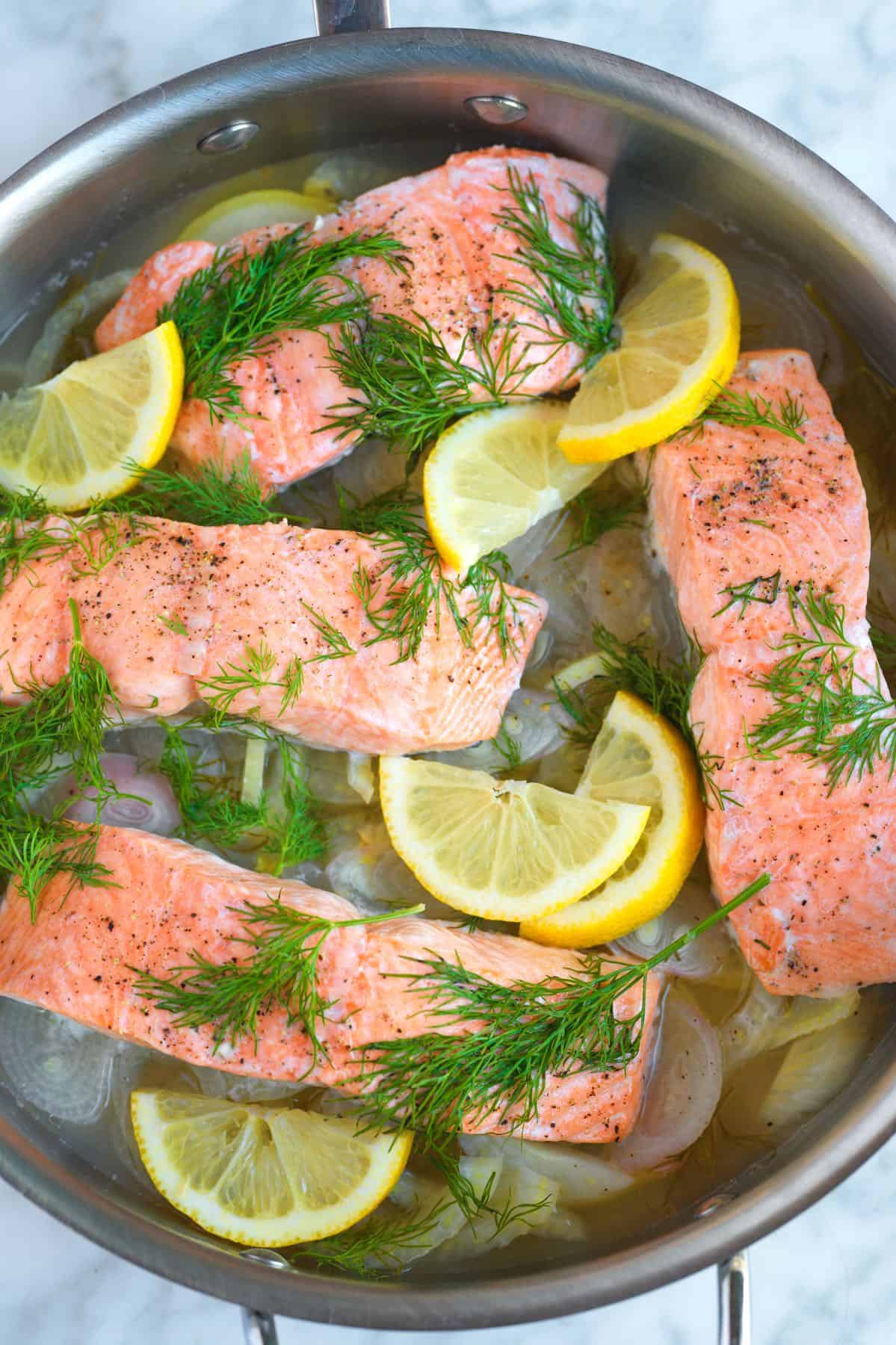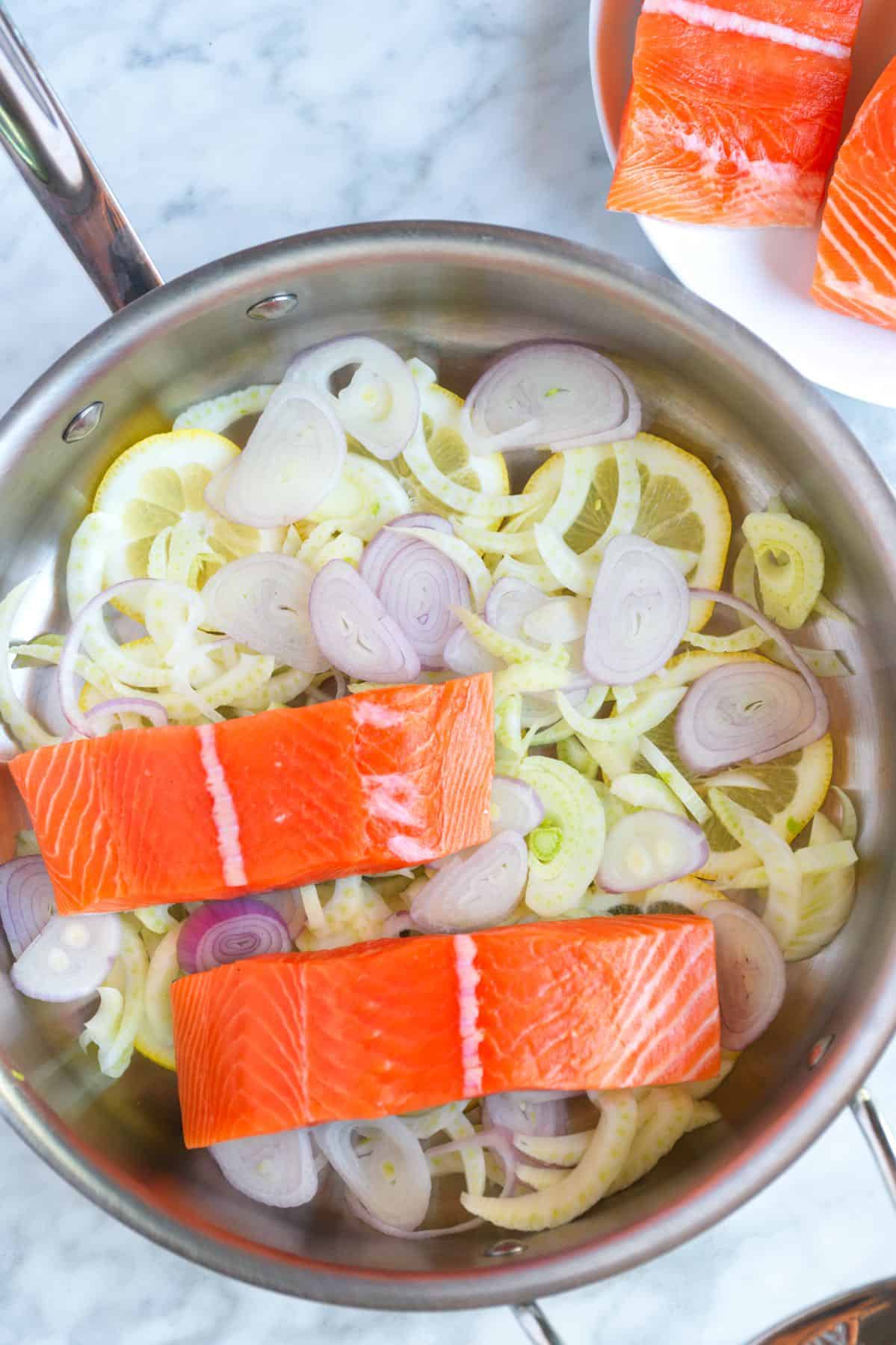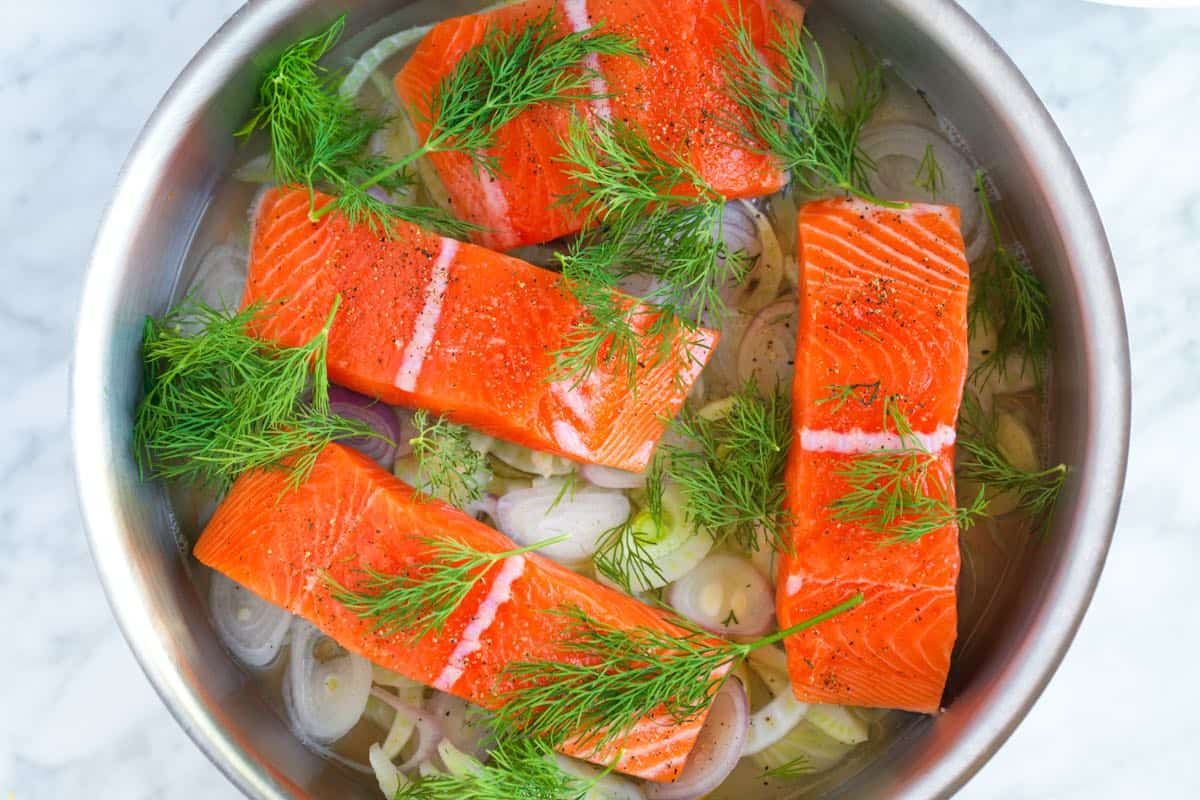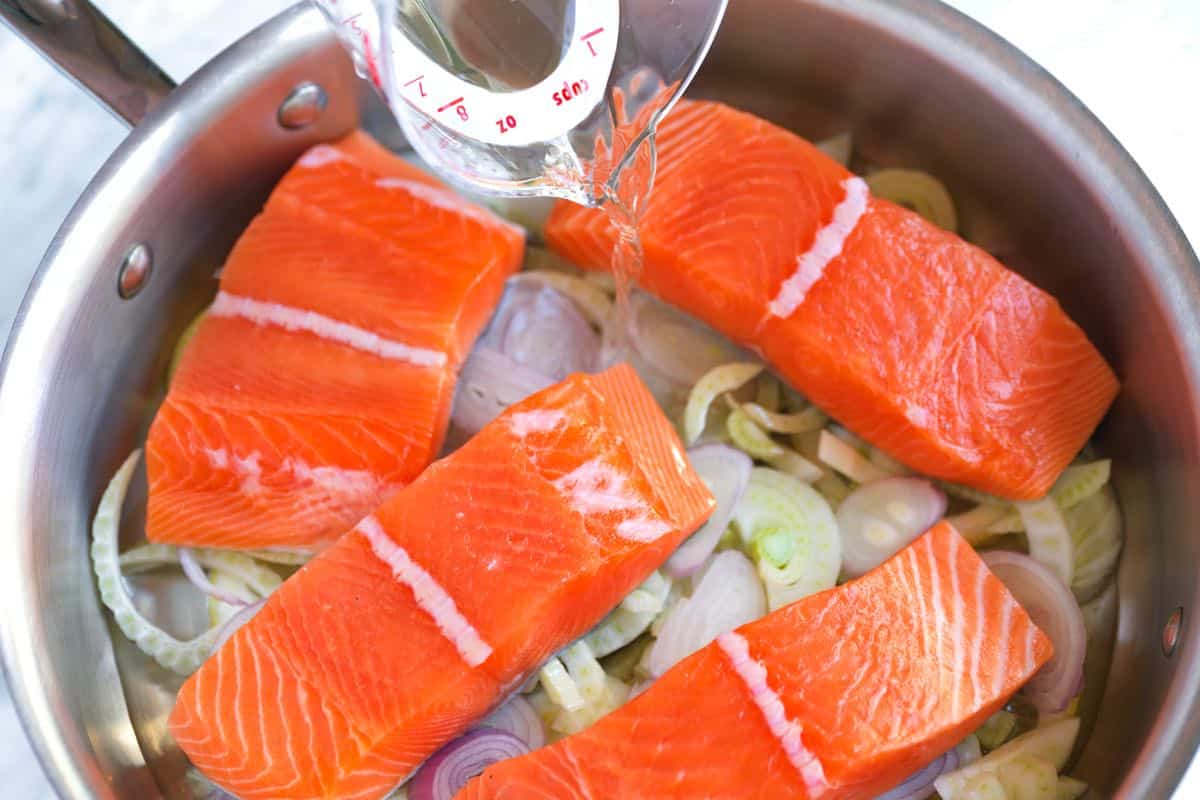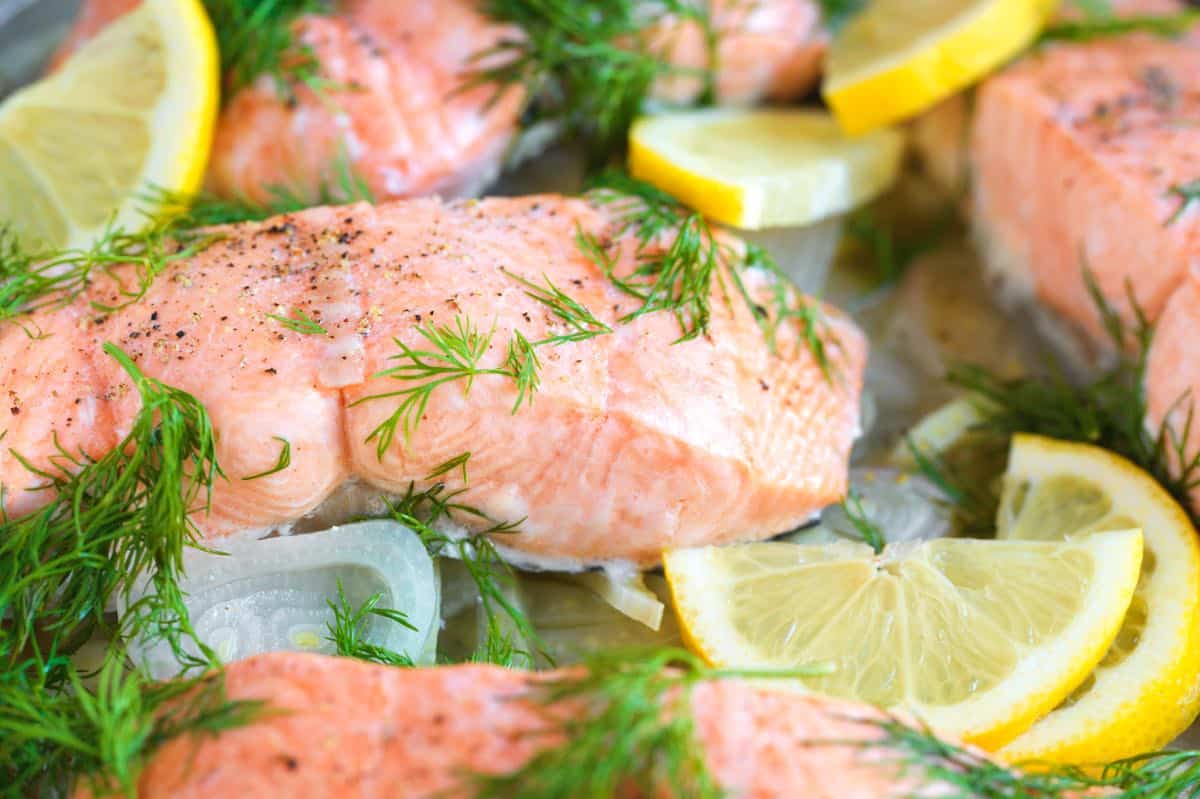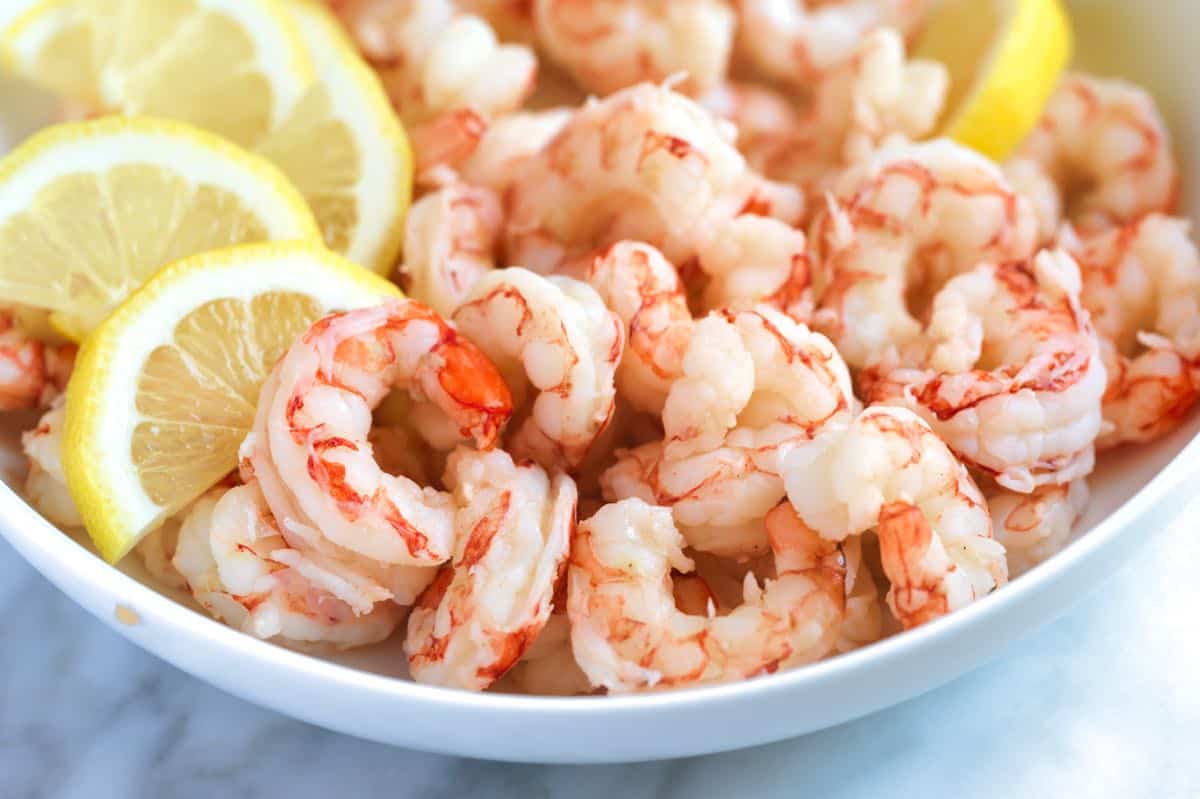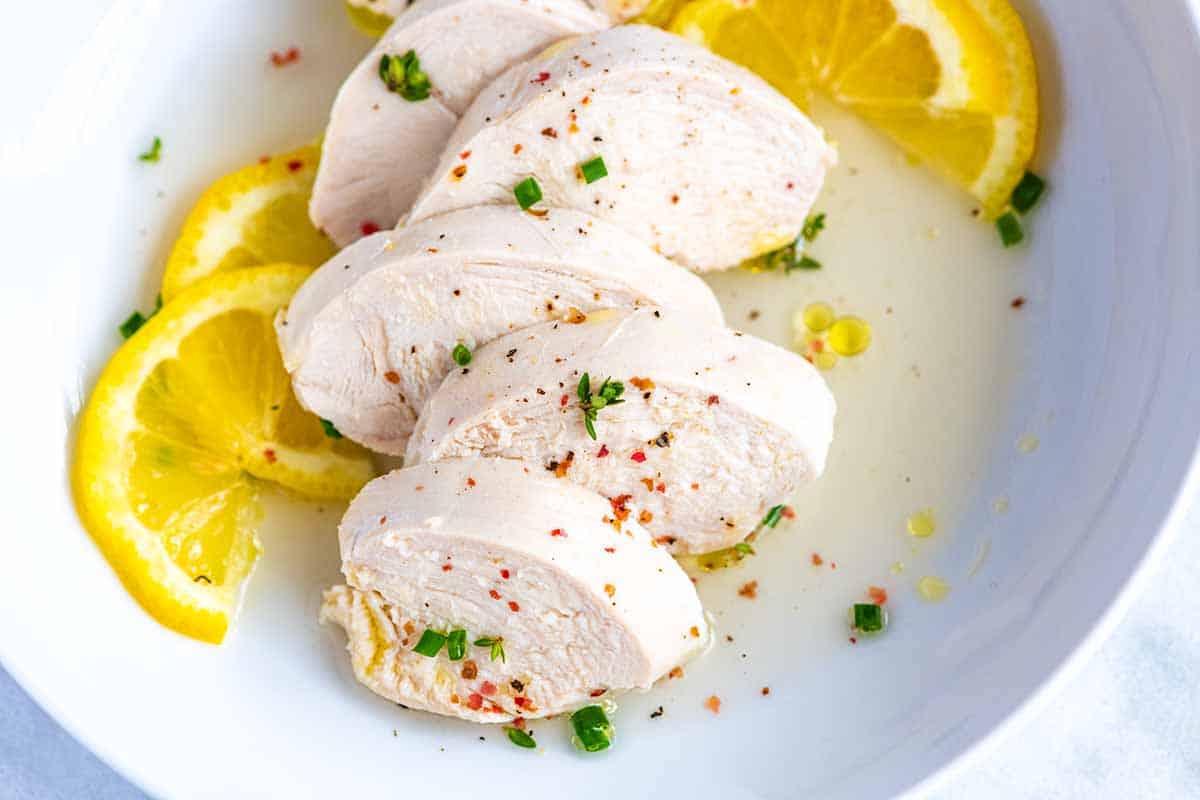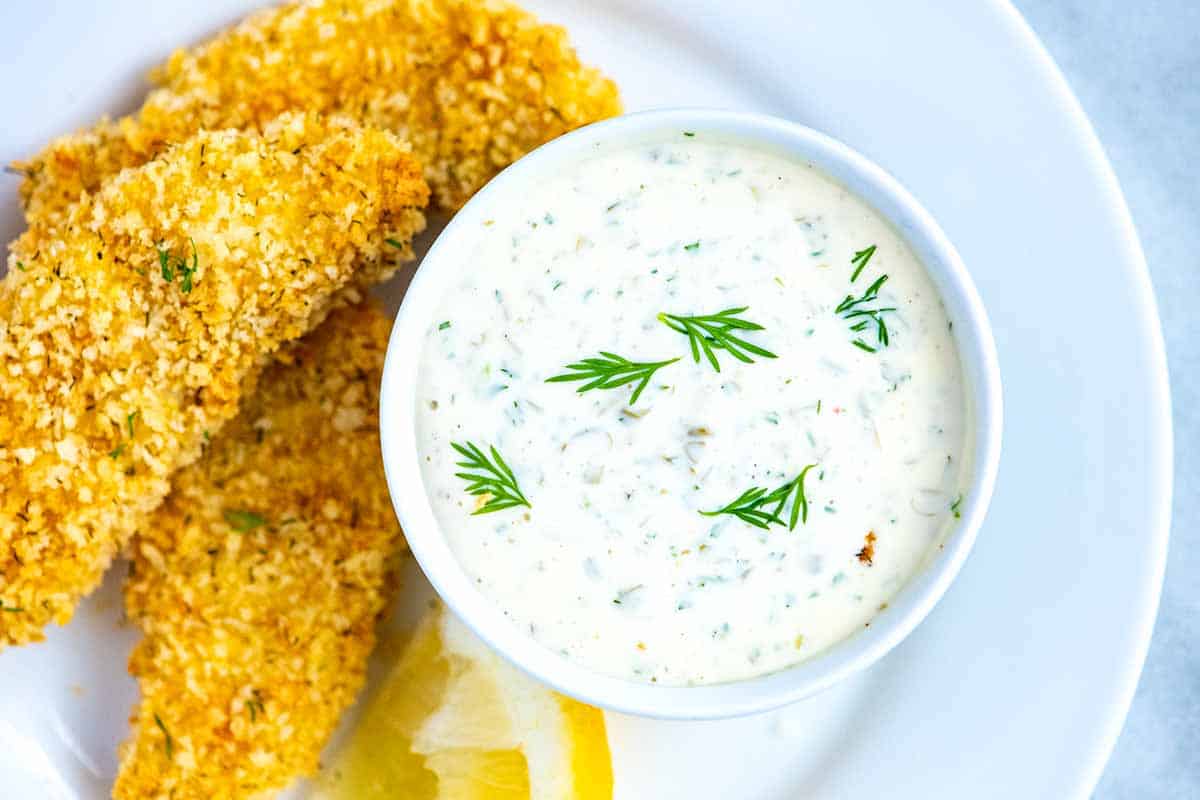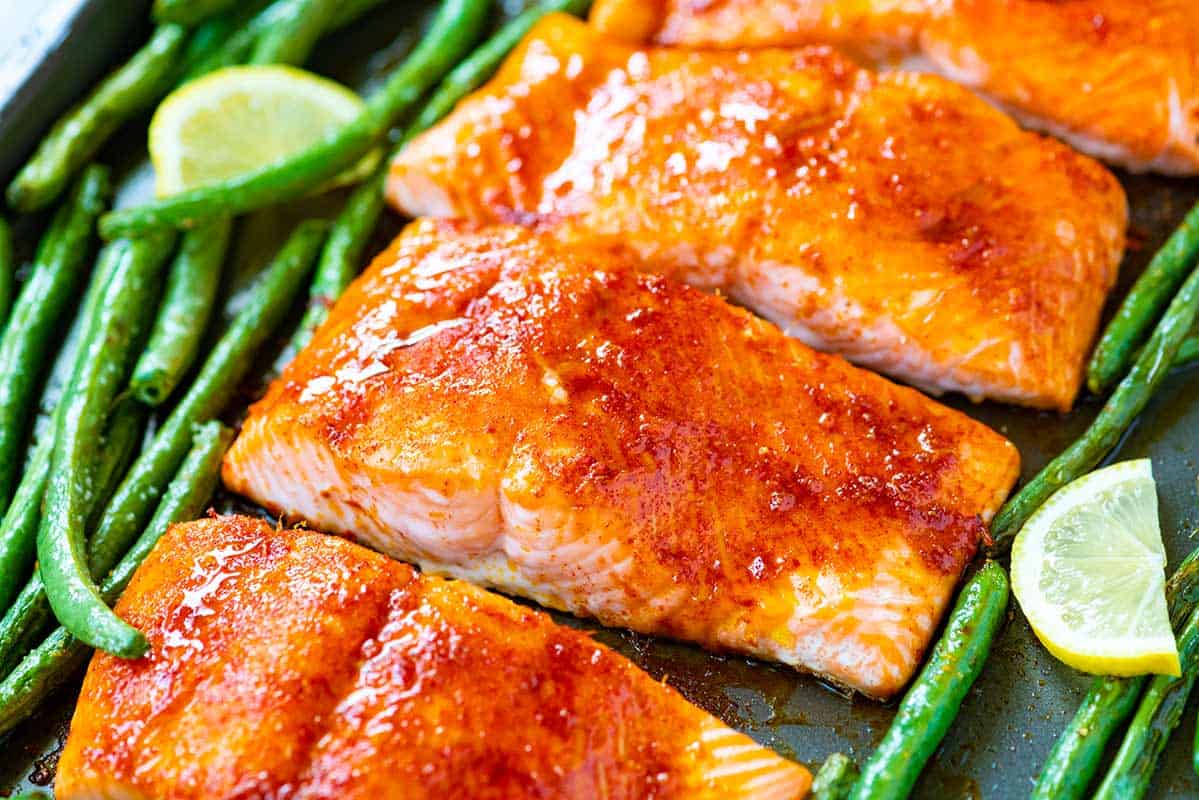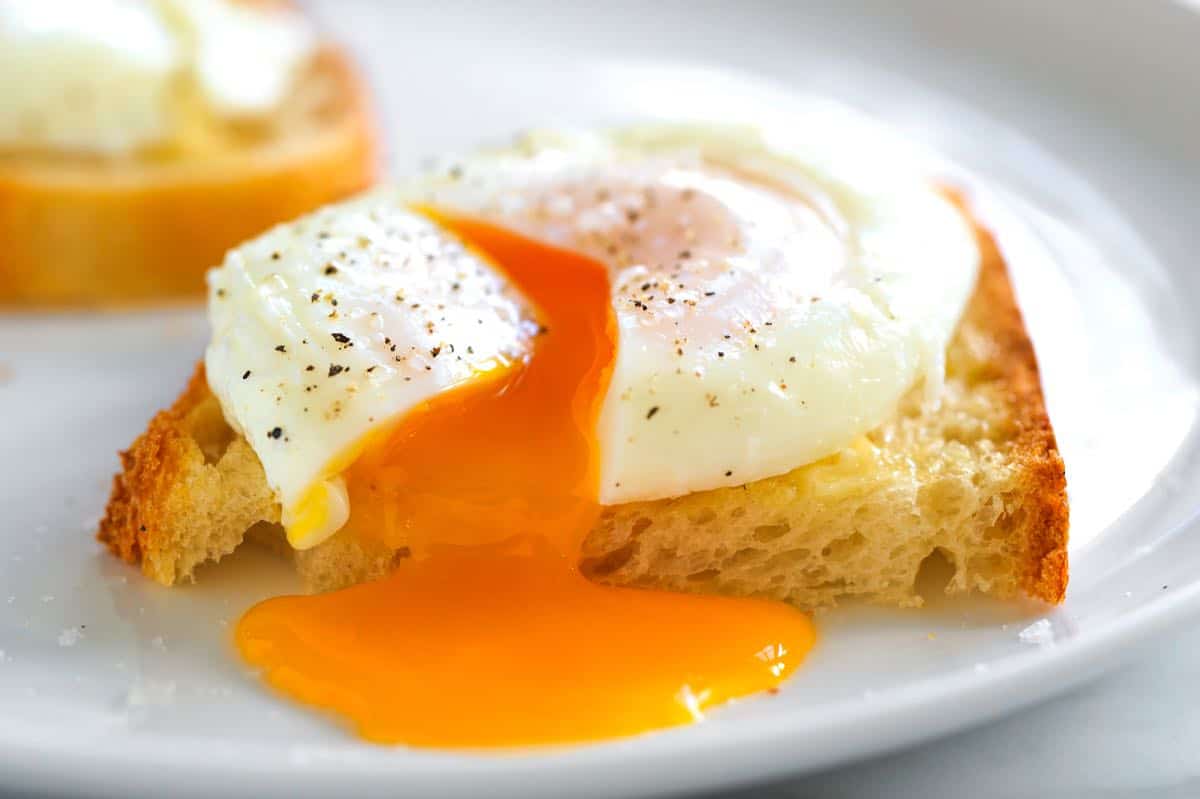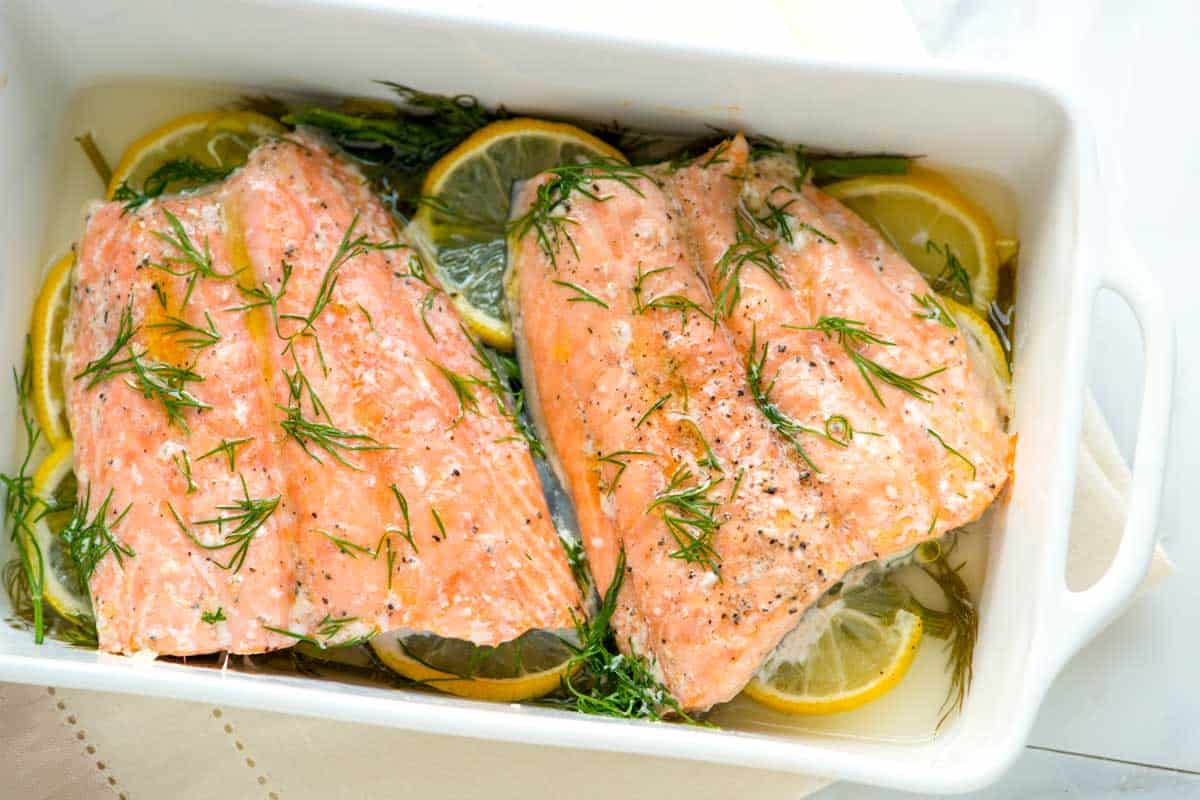I can’t stop making this poached salmon recipe, and I know the moment you try it, you’ll feel the same way. Poaching salmon is so easy to do. Poached salmon with water, salt, and pepper is delicious, but I love using my favorite aromatic poaching liquid (shared below). Enjoy your salmon on salads, flaked over toast, with creamy grits, or serve with roasted veggies.
Key Ingredients
Salmon: I use salmon fillets around 1 inch thick because thicker fillets will stay more tender and succulent when poached. I also like fattier varieties of salmon, such as King, Coho, and Sockeye. We also love Steelhead in this recipe (similar to Atlantic salmon). Wine or broth: I use a combination of wine and water for this poached salmon recipe. A splash of white wine adds a lovely flavor. I’ve even used leftover Lillet Blanc with excellent results (I usually have it on hand to make this French onion soup)! If you’re out of wine, broth is a delicious substitute. Vegetable broth or a light chicken broth works well, and seafood stock is even better. Lemon: Sliced lemon is the classic choice for poaching salmon. Try limes or oranges for a fun twist. Shallot: I prefer shallots over onion for poaching. They have a gentle sweetness that works well with the salmon. Smashed garlic cloves or sliced sweet onion are great alternatives. Fennel: My favorite aromatic for salmon! Fresh fennel adds a lovely licorice flavor. I wish more people cooked with fennel. If you’re feeling fancy, toss some extra fennel into your cart to make our fennel and apple salad (it pairs perfectly with this poached salmon). Fresh dill: Dill and salmon are a match made in heaven! I like scattering a lot of fresh dill into the pan. Other herbs like thyme, bay leaf, mint, and parsley are all great options.
How to Poach Salmon
Poaching is one of the best ways to make salmon, especially if you want moist and tender results. The same is true for chicken breasts and shrimp! To poach salmon, place seasoned salmon fillets in a skillet on top of a bed of aromatics, such as lemon slices and shallots. I keep the skin on my salmon fillets. The skin is much easier to remove after cooking and is a barrier to heat from below, protecting the salmon from overcooking. Add liquid (white wine or broth), and bring to a simmer. Cover your skillet with a lid, reduce the heat to low, and allow the salmon fillets to poach until they flake easily with a fork.
What to Serve with Poached Salmon
Poached salmon is fantastic on salads! Try it with broccoli slaw, kale salad, or a classic Caesar. I often serve it next to roasted veggies. I especially love this roasted zucchini with feta and crispy roasted potatoes. For a fresh veggie side, try cucumber (cucumber and salmon are amazing together). I love this creamy cucumber salad. Poached salmon can also be added to sandwiches and wraps. Consider this homemade pita, salad greens, and a drizzle of Tzatziki sauce! For something more luxurious, add your salmon fillet to the top of a bowl of creamy homemade grits. 1 cup water 1/2 cup white wine or broth 1 lemon, sliced 1 shallot, sliced 1 medium fennel bulb, sliced 6 sprigs fresh dill or other fine herb like parsley, cilantro or mint Salt and fresh ground black pepper 2Lightly season the salmon fillets with salt and pepper, then place them, skin side down, on the lemon slices, shallot, and fennel. 3Scatter fresh dill around the pan and on top of the salmon. 4Pour in the water and wine. The liquid does not need to cover the salmon. Since we are cooking it with the lid on, the salmon will poach, even if the liquid does not cover them. 5Place the skillet over medium-high heat and bring to a simmer. When the liquid is aggressively simmering, turn the heat to low and cover the skillet with its lid. 6Cook until an internal temperature thermometer reads between 125°F to 130°F or when you pierce the thickest part of the salmon with a fork, 5 to 12 minutes, depending on how thick the salmon fillets are. Serve. 2To reheat poached salmon, place it in an oven-safe dish. Add a splash of water or broth for extra moisture. Cover the dish with aluminum foil to prevent drying. Bake for about 15 minutes, or until the salmon reaches an internal temperature of 125°F to 130°F.

